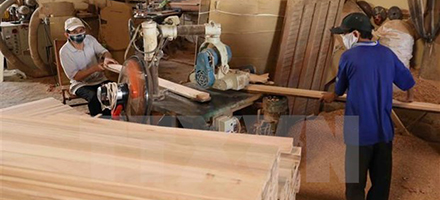Vietnam has become a leading wood product manufacturer with increasing imports of logs and sawnwood in terms of volume, variety and supply sources. In the early 2000s logs and sawnwood were imported into Vietnam from 40 – 45 countries. Today, logs and sawnwood are imported from more than 100 countries and import volumes and the number of imported species have increased. Source: Tropical Timber Market Report
In 2012 the volume of logs and sawnwood imported into Vietnam was reported at 2.4 million cubic metres. In 2020, this figure is forecast to have increased to nearly five million cubic metres.
Annually, Vietnamese enterprises spend about US$450 million to import logs and US$750 million on sawnwood. In general, the average of both logs and sawnwood imports has tended to decline gradually due to the increasing importation of plantation timber species and utilization of lower priced species.
The US, New Zealand, Africa (about 20 countries) EU and Chile are the main log and sawnwood suppliers to Vietnam accounting for over 70% of total imports in 2019.
On average, the number of countries/territories exporting logs to Vietnam varies between 70–75 yearly. The top five log suppliers for Vietnam are Africa, EU, PNG, US and China. These five suppliers share about 82% of the total import in the first 10 months of 2020.
In 2019, among the countries that exported logs to Vietnam, there were five countries with export of over 100,000 cubic metres led by Cameroon and followed by Belgium, the US, PNG and Germany.
There are approximately 100 countries exporting sawnwood to Vietnam each year. As was the case with log imports the number of sawnwood suppliers has not fluctuated much in recent years. The top suppliers of sawnwood include the US, Africa, EU, Chile, Brazil, New Zealand, and Russia. These seven together shared 82% of total sawnwood imported into Vietnam in the first 10 months of 2020.
In 2019, there were five countries supplying of over 100,000 cubic metres of sawnwood each to Vietnam, including the US, Chile, Brazil, Cameroon and New Zealand, 11 countries supplied over 50,000 cubic metres and 32 countries supplied of over 10,000 cubic metres.






